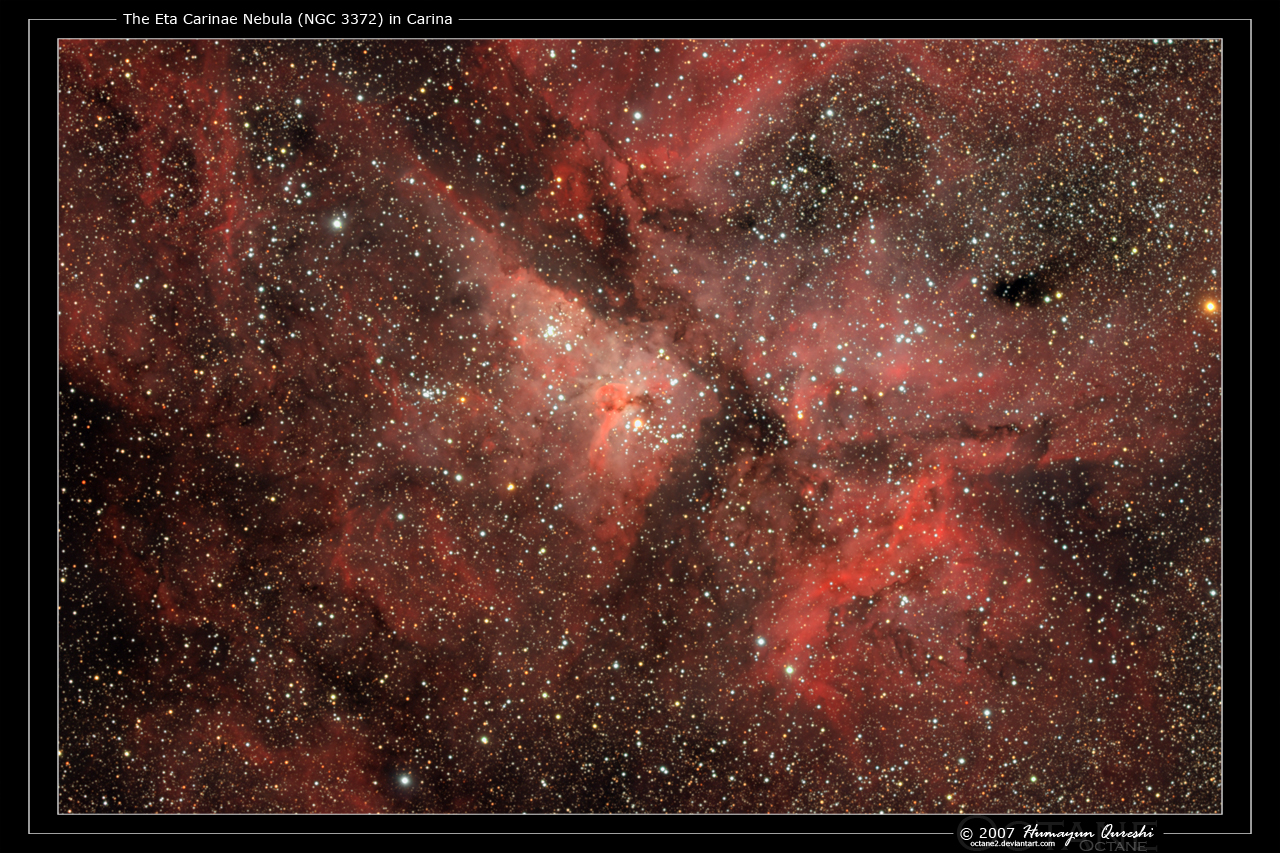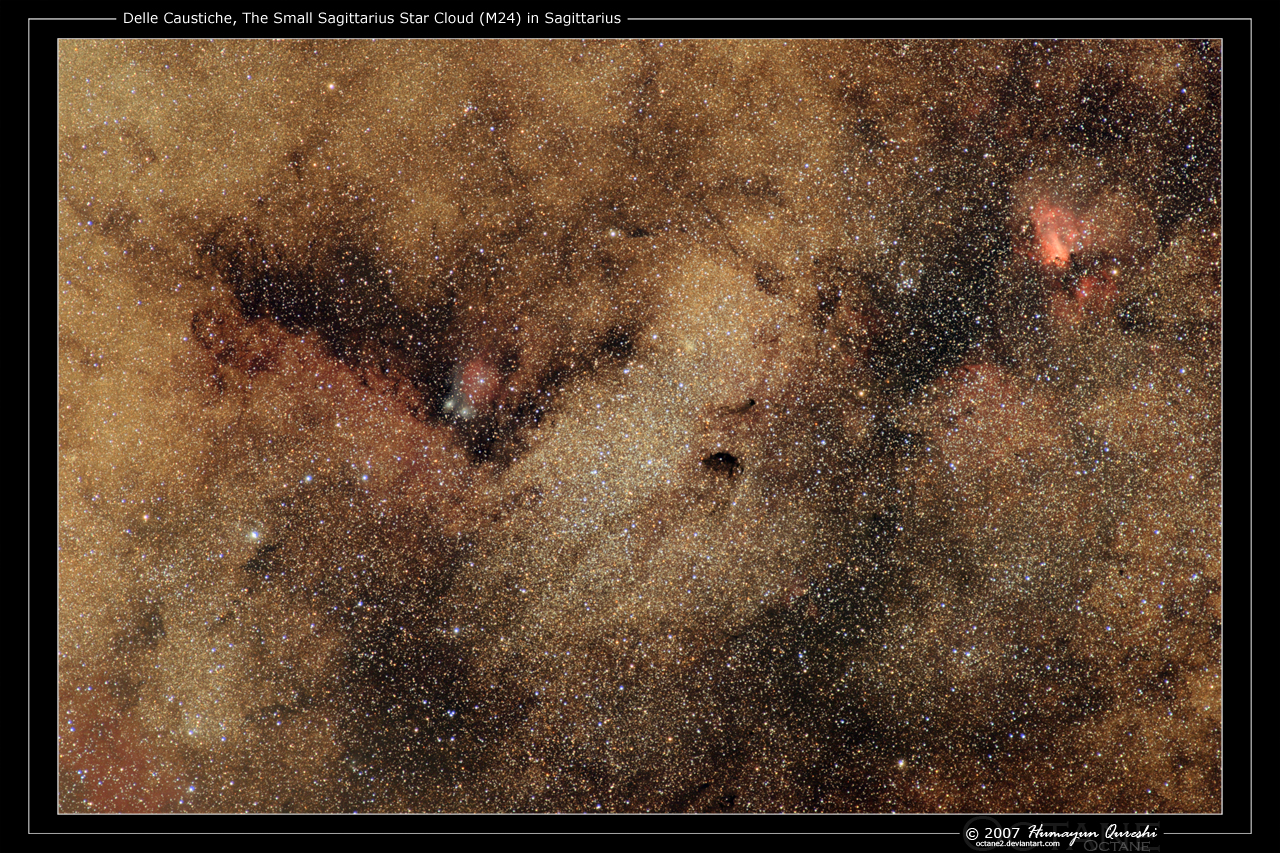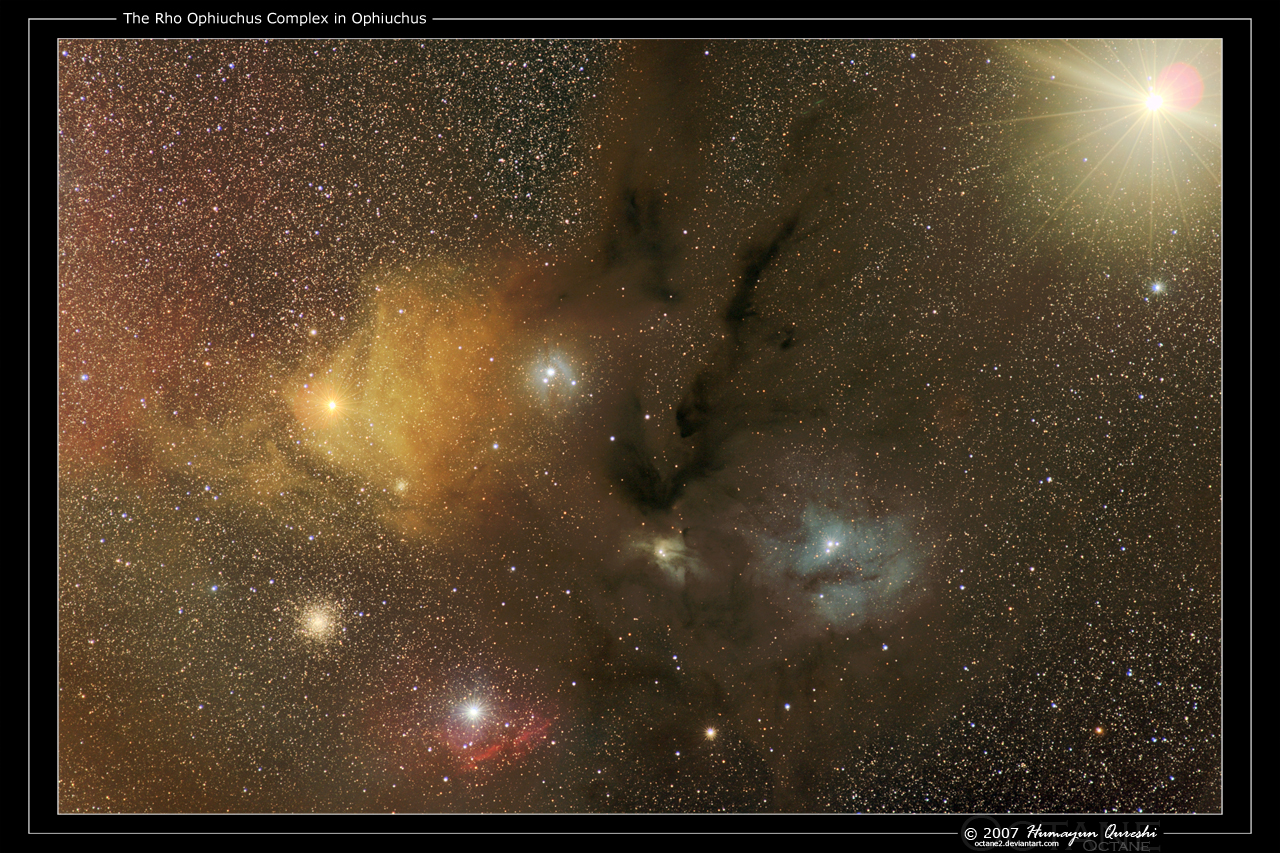|
I've been involved in astrophotography for a number of years now. I, personally feel that astrophotography is the most difficult discipline in the realm of photography, where the factors of environment, technology, patience, and the labour of love (or, should that be love of labour?) all must combine for an effort to pay off dividends. There's been countless times where I've driven several hundred kilometres out into the bush for a weekend of camping and imaging only to be met by cloud and rain. It just comes with the hobby, I suppose. I only just had to cancel today a four day trip out 600km away as the forecast is non-stop cloud and rain until Sunday. Fail. Anyways, thought I'd share a few images. If you'd like to see some more, or have specific gear-related questions, just ask. The Eta Carinae Nebula (NGC 3372) in Carina - Mark II 24 x 300 seconds (2 hours)  Delle Caustiche, The Small Sagittarius Star Cloud (M24) in Sagittarius 16 x 240 seconds (1 hour and 4 minutes)  The Rho Ophiuchus Complex in Ophiuchus 35 x 240 seconds (2 hours and 20 minutes)  Thanks for looking.
|
|
|
|

|
| # ¿ Apr 29, 2024 00:36 |
|
Hey Jekub, Cheers, mate. I use IRIS for pre-processing and Photoshop CS4 for post-processing. I have found IRIS to be one of the single most powerful image processing applications ever written. It does absolutely everything. Its transformation algorithms are all kinds of awesome; I've managed to register images taken with an 8" LX90 SCT and an ED80 without a problem. It just works. I will be in the market for an 8300M some time later this year, to start on the road to filtered imaging. So far, I've been persevering with a modified 350D (now sold), and, now a modified 40D, as well as dabbling with my 5D Mark II. The 5D Mark II has incredible resolution. I would love to purchase a second body and have it modified for astrophotography, but, that's a fair bit of coin. The 40D does remarkably well. I own and use a beloved G-11 (with Gemini). My guiding set up is a DSI attached to a ZenithStar FD80 mounted on top of my current toy, a 5" triplet APO. I don't need them, but, I'm considering purchasing encoders for the Gemini, as I tend to re-balance my gear before imaging in the east, and, after a meridian flip. Next pay packet, I'll be ordering a Moonlite motorised focuser for the ED127 as with wild temperature changes, I've noticed my images getting slightly softer throughout the night. And, with precision focusers, there's such a small critical focus zone that it's just not practical focusing by hand. I'm also interested in perhaps an 8" f/4 imaging Newtonian. They're quite cheap and coupled with an MPCC will provide pretty impressive fields. My current set up:   Jekub posted:As I mentioned elswhere, your images are all amazing, I've got several astrophotographers who's images push me to learn more and do better, I'll have to add you to that list.
|
|
|
|
INTJ Mastermind, Not a stupid question at all. Are you imaging? If so, I personally do re-balance if I'm moving from one side of the meridian to the other. Even the smallest things, such as cables dangling in the breeze, can make a huge difference. So, process for me is to move to area of the sky I wish to image in, re-balance, find a bright star, synchronize the Gemini to it, slew to object and start imaging. INTJ Mastermind posted:Might be a stupid question, but if I balance an EQ mount, do I need to rebalance it when I change the orientation?
|
|
|
|
Jekub, I have not had an issue to date with finding a guidestar in the field of view of the ZenithStar FD80 coupled with the Meade DSI. Even in the sparsest field, such as around NGC 253, I was able to find a good guide star. If I do have issues, I have the normal William Optics guide rings that I can easily pop on in place of the rigid system. Cheers. Jekub posted:Octane2 how do you get on with having your guidescope mounted in rigid rings rather than adjustable? Do you ever have issues locating a guide star with that configuration? I tested a similar setup for mine over the weekend but had great difficulty locating a suitable guide star (imaging Leo triplet) whilst keeping the object in frame. I imagine having a better guide camera than a modified webcam would help with this.
|
|
|



